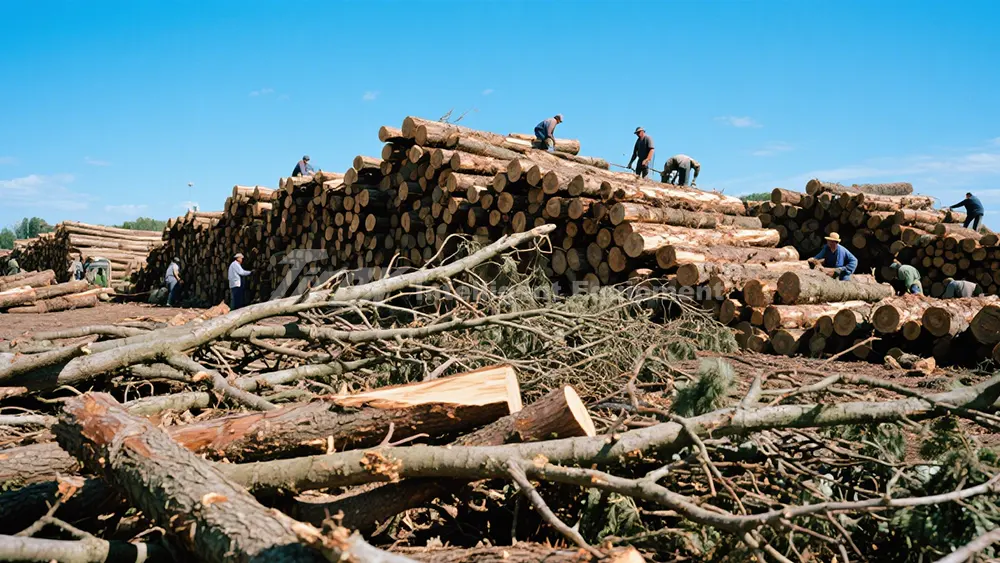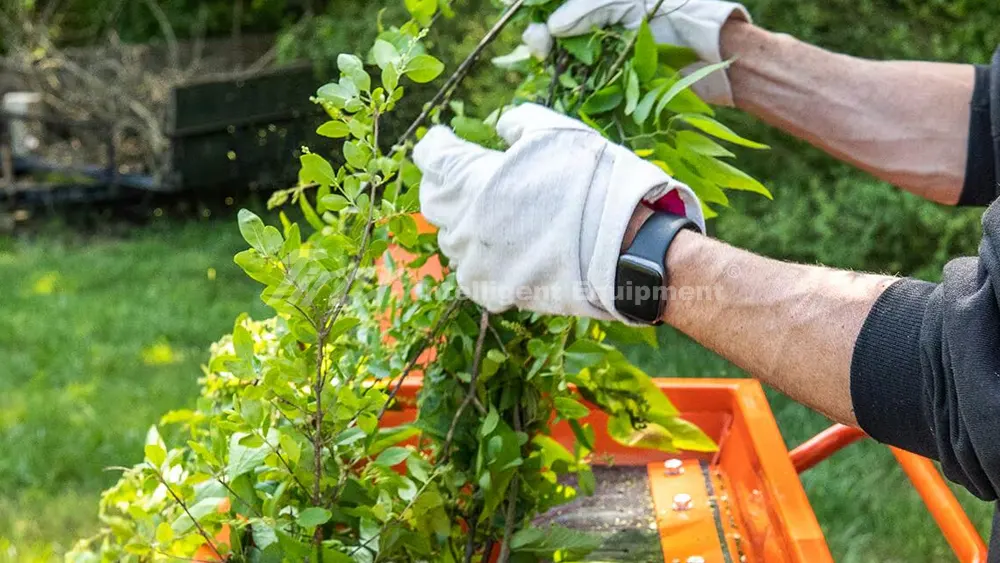Wood chippers are essential equipment in the wood processing industry, and their efficiency directly impacts production capacity and cost control. However, many businesses encounter efficiency issues during operation, which can disrupt production.

Raw Material Issues
Inappropriate Moisture Content
Excessive moisture in wood slows down the chipping process and may clog the screen, while overly dry wood can generate excessive dust, affecting the work environment. It’s recommended to use wood with a moisture content of 10%-15% for optimal performance.
Mismatched Wood Types
Different wood types have varying hardness levels, requiring different equipment specifications. For example, hardwood can cause faster blade wear, while softwood may result in uneven chipping. Choosing raw materials that match your equipment’s design is critical.
Insufficient Preprocessing
Wood containing stones, nails, or other foreign objects can damage the chipper’s blades or screen. Use magnetic separators or manual sorting to remove debris, ensuring smoother operations.
Equipment Issues
Blade Wear
The sharpness of the blades is critical to chipping efficiency. Dull blades increase motor load and reduce productivity. Regularly inspect blade conditions and consider sharpening or replacing them every 100 hours of operation.
Insufficient Motor Power
Inadequate motor power or unstable voltage directly affects the equipment’s operational speed. Ensure the motor output matches the machine’s requirements and use a stable power supply.
Clogged Screens
Clogged screens are a common cause of reduced efficiency. Choose screens with appropriate mesh sizes and clean them regularly to maintain optimal performance.
Operational Issues
Overloading
Overloading the machine leads to excessive wear on components and potential damage. Maintain appropriate feeding amounts, and inspect the equipment’s condition before each use to avoid prolonged high-load operations.
Improper Feeding Methods
Overfeeding can cause blockages, while underfeeding wastes energy. Ensure consistent and even feeding. Consider using an automatic feeding system to maintain a stable workflow.
Operator Inexperience
Untrained operators may make mistakes such as adjusting parameters incorrectly or ignoring anomalies. Providing professional training for operators can significantly reduce errors and improve efficiency.

Maintenance Issues
Neglecting Routine Cleaning
Residue inside the machine can affect cooling and operations. Regularly clean the machine, especially around the blades and screens, to prolong its service life.
Ignoring Critical Component Checks
Key components such as bearings and belts are prone to wear over time, affecting overall efficiency. Regularly inspect and replace these parts to prevent minor issues from escalating into major failures.
Quick Troubleshooting Steps
- Inspect Raw Materials: Ensure proper moisture content and remove any debris.
- Check Equipment Status: Examine the blades, screens, and motor for proper functioning.
- Review Operating Procedures: Verify feeding methods and machine settings.
- Check Maintenance Records: Ensure critical components are maintained and replaced as needed.
Following these steps allows for quick identification of problems and timely action to avoid further efficiency loss.
Tips for Improving Efficiency
- Create a Maintenance Plan: Develop a specific schedule based on usage frequency to ensure regular upkeep and avoid unexpected failures.
- Optimize Operating Processes: Introduce automated feeding systems or improve operator skills to minimize human errors.
- Choose Suitable Equipment: Select the right model and configuration based on your production needs to avoid performance limitations.
Conclusion: Timely Problem Detection for Enhanced Efficiency
The efficient operation of a wood chipper relies on the proper selection of raw materials, regular equipment maintenance, and optimized operating methods. By quickly identifying and addressing common issues, you can improve production efficiency, extend the machine’s lifespan, and lower operating costs. We hope this guide provides practical help for your business, ensuring smooth and efficient production.






